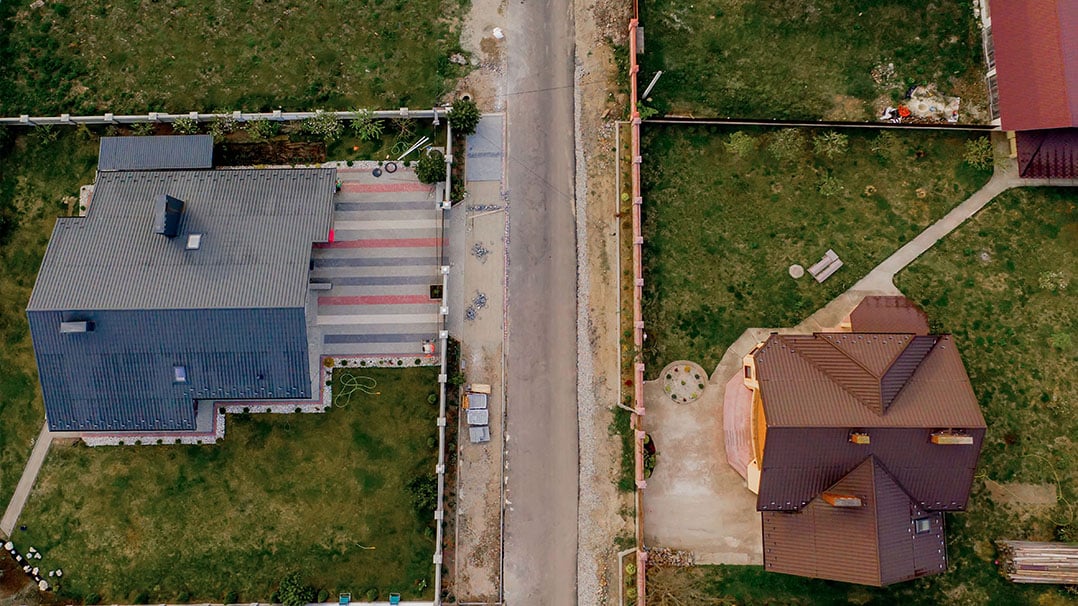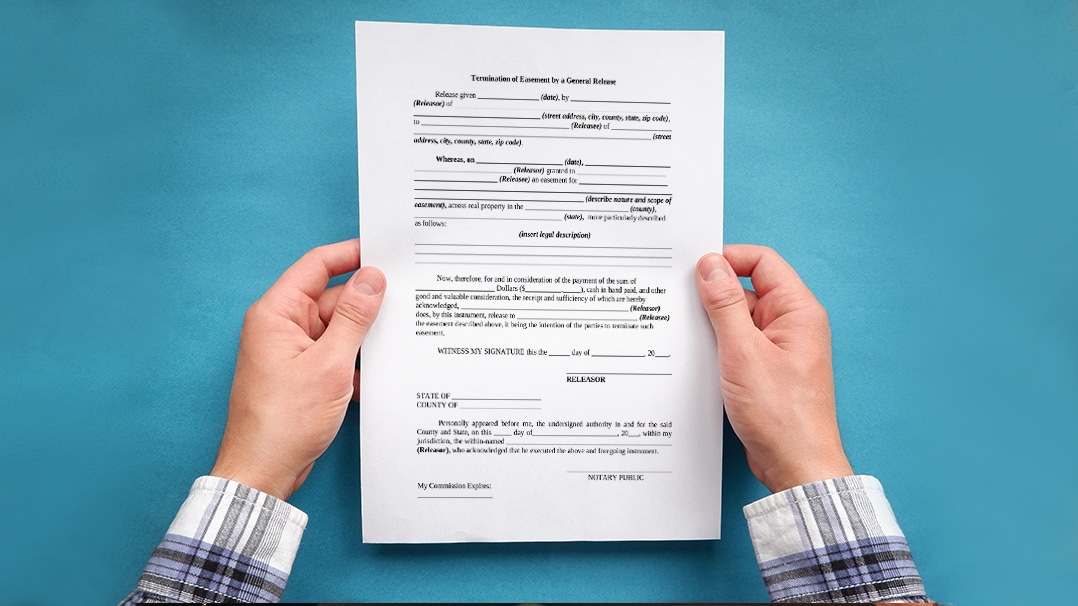
CRE Arena Podcast Interview: Erik Egelko
October 10, 2023
The Senior Citizen’s Guide to Commercial Real Estate in CA
October 19, 2023
Disclaimer: I am not an attorney and this article is not intended as a substitute for advice from the appropriate legal, zoning, financial, construction and/or tax professionals. This information is provided for educational purposes only and is made without warranties or representations
An easement is a legal right or interest in another person’s land or property that allows the holder of the easement to use or access that land or property for a specific purpose. While the person holding the easement does not own the land, they have the legal right to use it in a particular way as specified in the easement agreement.
Easements can serve many different purposes, such as right-of-way, utility easements, drainage easements, or conservation easements. Whether there are any easements on your property can have a big impact on your rights as a property owner and your property value, so it’s essential to do your due diligence whenever purchasing an asset.
What do you need to know about easements as a commercial real estate investor in California? Let’s take a look.
Understanding the Types of Easements in CA Commercial Real Estate
In California commercial real estate, various types of easements can impact property use, access, and value.

For this reason, it’s crucial for commercial property buyers and sellers to thoroughly review the property’s title report, surveys, and relevant legal documents to understand the existence and terms of any easements that may affect the property.
Do you own rentals in California? Make sure you check out our list of new CA laws that affect landlords in 2023.
Easement by Necessity
Easement by necessity is a type of easement in California commercial real estate and is based on the principle that certain properties may be landlocked or have limited access to a public road. This legal concept ensures that property owners have a right to access their land, even if it means crossing another property. Easements by necessity are created by law and not through mutual agreement between the parties involved.
Easements by necessity typically arise when a property is completely surrounded by other parcels of land, making it impossible for the owner to access the property without crossing neighboring land. This lack of access is what creates the necessity for an easement.
Easements by necessity are automatically created by law when the following conditions are met:
- The properties were once under common ownership.
- There was access to a public road at the time of the division.
- The division left one of the parcels landlocked, creating a necessity for access.
Easements by necessity are generally limited to the minimum access necessary for the landlocked property owner to reasonably use their land. They are typically limited to the historical use or route that provided access. When the necessity no longer exists, the easement is terminated. For example, if an alternative means of access becomes available, the easement by necessity may no longer be required.

The party benefiting from the easement (the landlocked property owner) is usually responsible for maintaining the easement path unless otherwise specified in a legal agreement or court order.
Disputes regarding easements by necessity can arise, particularly when it comes to the scope of the easement, maintenance responsibilities, or changes in access needs. In such cases, the parties involved may need to seek legal resolution.
While easements by necessity are created by law, it’s still advisable to have a legal professional draft the necessary documents and record them in the county’s public land records to ensure that the easement is properly documented and can be easily identified by future property owners.
Easement by Prescription
Easement by prescription is an easement acquired through continuous, open, and hostile use of another person’s property for a specific statutory period. This type of easement is similar to adverse possession, which allows someone to acquire ownership of land through the same principles of continuous use. However, in the case of easement by prescription, the right acquired is an easement, not ownership of the property.
To establish an easement by prescription, the use of another person’s land must be continuous and uninterrupted for a statutory period, which is typically five years in California. The use must occur without the owner’s permission and must be exclusive (meaning it’s not shared with the owner).
The use of the land must also be open and notorious, meaning that it is easily observable, and the property owner should reasonably have knowledge of it. This requirement ensures that the property owner has an opportunity to take legal action if they wish.

Furthermore, the use must be hostile and adverse, meaning it is made without the owner’s permission and legal right to use the land. It’s important to note that “hostile” in this context does not necessarily imply hostility in the aggressive sense but rather that the use is without permission.
In California, as mentioned, the statutory period for acquiring an easement by prescription is generally five years. Once this period is met, the party seeking the easement may have a legal right to continue using the land in the same manner.
Property owners can assert defenses to prevent the acquisition of an easement by prescription. These defenses may include proving that they gave permission for the use or that the use was not continuous, open, or hostile.
Easement by Condemnation
Easement by condemnation, also known as an easement by eminent domain, is created when the government exercises its power of eminent domain to acquire a portion of private property for public use. In this process, the government takes the right to use a specific area of the property for a particular public purpose, such as building roads, utilities, public facilities, or other infrastructure.
Eminent domain is the legal authority of the government to take private property for public use, provided that they pay just compensation to the property owner. In the context of easements, the government exercises its eminent domain power to acquire only a limited interest in the property, such as the right to construct and maintain utilities or roads.
Easements by condemnation are established for a public purpose. This can include the construction of roads, bridges, utilities (e.g., pipelines, power lines), and other essential public infrastructure. The government must demonstrate that the acquisition is necessary for a legitimate public project.

The property owner is entitled to “just compensation” for the easement the government takes. The compensation should reflect the easement’s fair market value and any decrease in the property’s value due to the loss of use or access.
Easements by condemnation follow a legal process, including notice to the property owner, appraisals to determine fair compensation, and potential negotiations. If an agreement cannot be reached, the government may proceed with the condemnation through a court action.
Property owners have the right to challenge the government’s actions, including the necessity of the easement or the amount of compensation offered. This may involve legal proceedings to ensure fair treatment.
Express Easement
In California, express easements are the most commonly encountered type of easement. They can be acquired by individuals and organizations through either a reservation or a grant. When granted, express easements give another individual or entity the right to use a portion of the land for right-of-way purposes.
Express easements can be created through written agreements, often included in property deeds or separate legal documents. The agreement must be clear and specific about the rights and limitations associated with the easement.

An express easement can be transferred to new property owners when the property is sold. This is known as an apparent easement, and it typically runs with the land, ensuring that the easement continues to benefit the new property owner.
Thinking about refinancing, but not sure if it’s the right call with interest rates where they are? Read our recent post about refinancing in a high-interest rate environment.

Party Easement
A party easement is created in relation to a common boundary, such as a shared wall, driveway, or fence between two parties in a written agreement.
Also known as a party wall easement, this type of easement is commonly found in urban areas where buildings are constructed close to each other and address issues related to shared walls or structures.

A typical party wall agreement may include provisions related to:
- Rights of access: Each property owner’s right to access the party wall for maintenance, repairs, and modifications.
- Cost-sharing: How the costs of maintenance and repair work on the party wall are shared between property owners.
- Restrictions: Limitations on structural alterations, modifications, or uses of the party wall to ensure the structural integrity and safety of both properties.
- Dispute resolution: Procedures for resolving disagreements or disputes between property owners regarding the party wall.
Party wall agreements are generally legally enforceable. They are designed to prevent disputes and ensure that both property owners share the responsibilities and benefits associated with the shared wall.
Can You Terminate an Easement on a CA Property?
In most cases, easements are designed to continue indefinitely. That being said, it is possible to terminate easements through a few different methods.

These include:
- Express agreement: Terminating the easement by reaching an agreement with the easement holder
- Merger: The title to the servient estate can be obtained by the dominant estate owner
- Abandonment: The easement holder, in this instance, takes action that makes it so they can no longer use the easement
- Ending by necessity: This happens when an easement that was once deemed necessary is no longer found to be necessary
In terms of abandonment, the easement holder has to permanently abandon the easement. It doesn’t count if they simply stop using the easement for a short period of time. It typically requires a skilled real estate attorney to navigate the process of terminating an easement.
Do Easements Transfer With a Sale?
When a property is sold in California, how any involved easements will be treated will depend on the easement type.

For example, when express easements are reserved, an easement has been passed along with the property when the land is sold from one person to another. In this scenario, the original property owner retains the easement for the benefit of the individual or entity.
How to Sell an Easement in CA
You can establish a new easement on your property to grant someone else a specific usage right. For instance, if your neighbor needs to cross your land to access theirs, they might want an easement on your property. Similar to selling real estate, you can transfer these rights. To do this, you’ll need a written agreement that lays out the terms of usage, and you’ll have to officially record the easement in public records. This easement will stay with the property, even if you decide to sell it later on.
When you’re selling or establishing an easement, it’s essential to clearly define where it is, its size, who has the rights, and what activities are permitted on the property. For example, an easement enabling your neighbor to construct a road is quite distinct from one that lets the city install sewer lines on your land. To ensure all these details are accurately laid out, working with a real estate attorney is wise.

It’s possible that you could inadvertently be transferring an easement with a property when you go to sell it. This is because many easements are perpetual, which means they don’t have an expiration date and will stick with the property’s title unless legally revoked. This is why it’s a good idea to conduct a title search when you’re in the process of buying or selling real estate– it can uncover any easements connected to your property. If you discover an easement you weren’t aware of, it could potentially impact your property’s value when you decide to sell it.
Possible Complications You Could Face With Easements in CA
As you’ve likely picked up, easements on your property can cause some headaches.
When buying or selling property in California, several potential complications can arise in relation to easements. Easements can impact property use, value, and ownership rights.
For instance, existing easement disputes can lead to complications during the sale of property. Disputes may involve disagreements over the scope of the easement, maintenance responsibilities, or the right to modify or terminate the easement.

Furthermore, unrecorded easements may not be readily apparent during a property transaction. These hidden easements can cause disputes or legal issues when discovered, potentially affecting the property’s value or the buyer’s intended use.
Easements related to access (e.g., driveways, pathways) can also be a source of complications. Ensuring that the easement provides adequate and practical access to the property is essential. If not, it can affect the property’s marketability and value.
Ready to Sell Your Property?
Whether or not your property has an easement on it, the real estate professional you choose to help guide you through the sales process can greatly impact how profitable and smooth the transaction is.

As California’s top real estate broker, I’m uniquely positioned to help you achieve your real estate goals. If you’re looking to buy or sell commercial real estate in California, reach out today!

Erik Egelko is a veteran of the commercial real estate business with a specialized focus on Investment Property Sales. In 2021 and 2022, Erik was the #1 ranked Broker in California for one of the largest CRE Firms as well as ranked in the Top 1% of brokers nationwide. He has extensive experience in a variety of asset types including: Retail Shopping Centers, Medical Office Buildings, Industrial Properties, and Multifamily Apartment Complexes. Over the course of his career, Erik has closed over $100,000,000 of commercial property sales throughout Southern California.



